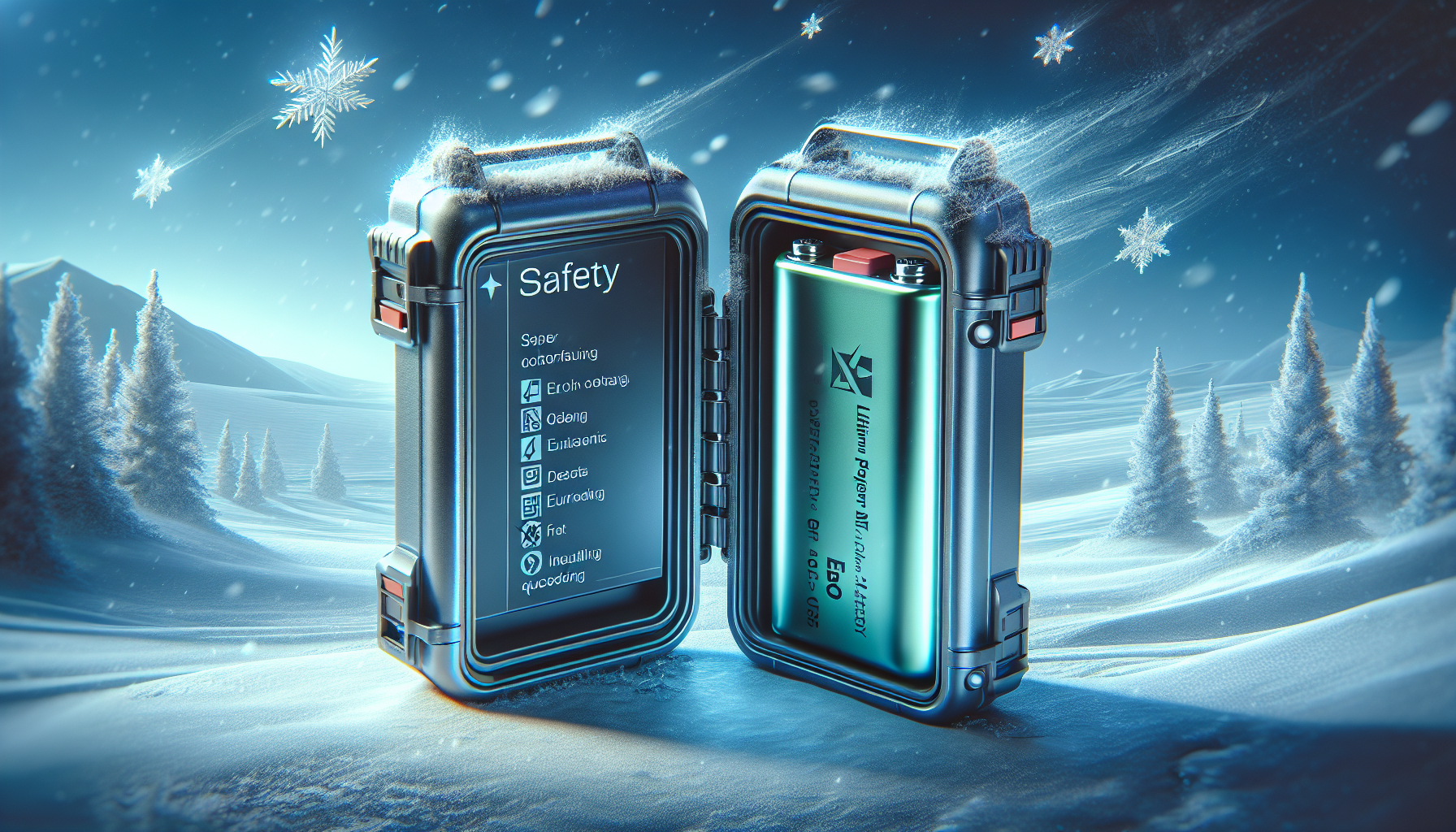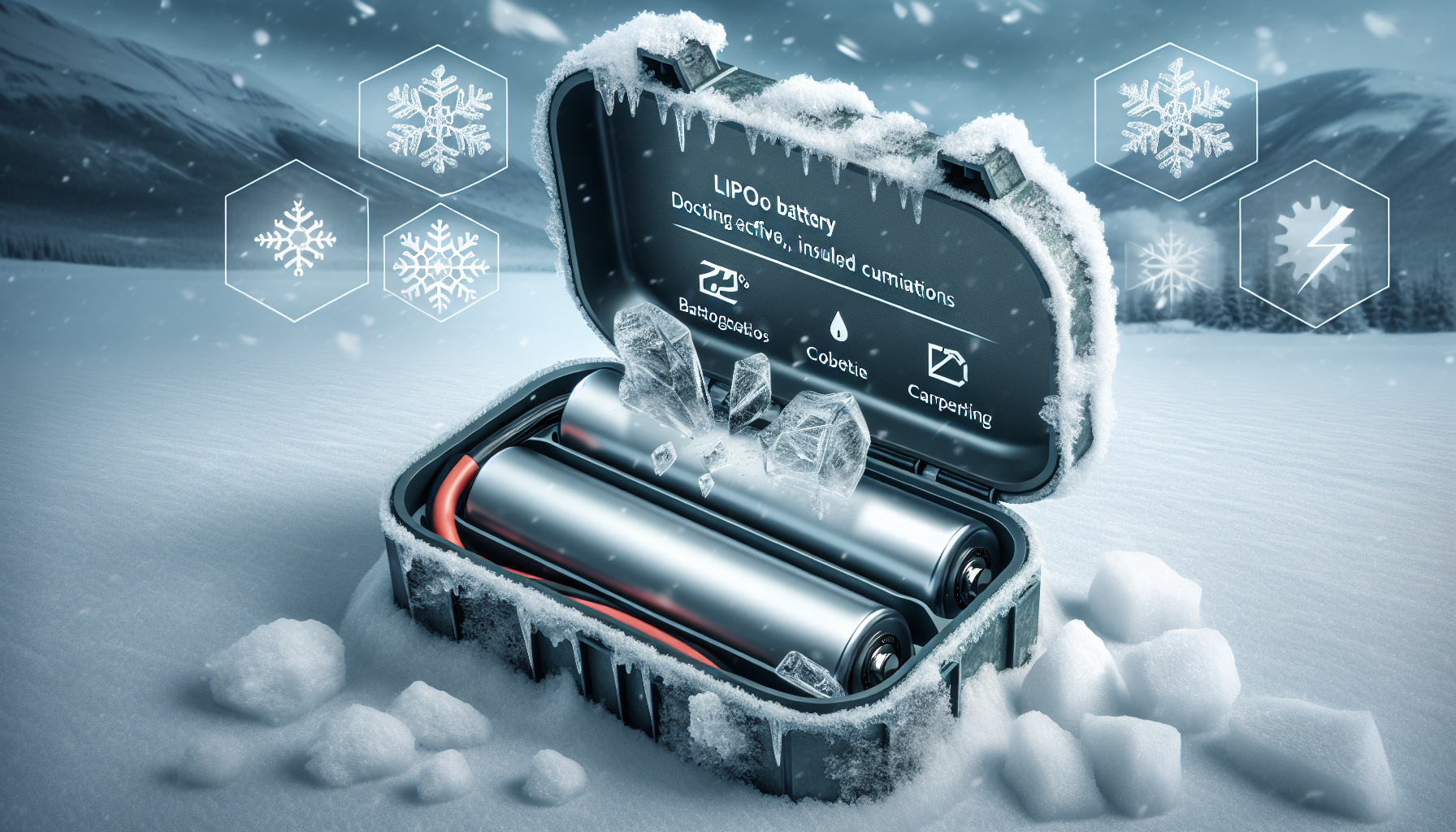Have you ever wondered how to keep your LiPo batteries in excellent condition during winter or when you’re traveling?It might seem like a trivial matter, but understanding the nuances of storing these power-packed marvels can make all the difference between safe usage and a possible calamity. Here, I’ll walk you through the essentials of storing LiPo batteries both for cold weather and travel safety. Trust me, by the time you’re done reading, you’ll feel like the boss of battery storage.

Understanding LiPo Batteries
To talk about safekeeping LiPo batteries, it’s crucial to first understand what exactly they are. Lithium Polymer batteries, or LiPos for short, are rechargeable power sources that are ubiquitous in the world of radio-controlled models, drones, and many electronic gadgets. They offer high energy density, which translates to longer usage times without frequent charging. Yet, with these benefits come responsibilities. LiPo batteries require extra care, especially when facing cold weather or while traveling.
Characteristics of LiPo Batteries
LiPo batteries are the overachievers of the battery world. They pack a high energy capacity in a compact form and maintain a consistent power output. However, their chemistry makes them sensitive to factors like temperature and physical stress. When stored incorrectly or manhandled, these batteries can swell, leak, or even burst. Knowing the lay of the land with LiPo batteries means respecting how they like to chill (figuratively and literally speaking).
Why Special Storage Matters
You might be curious why LiPo batteries merit this special storage attention. The answer is simple: safety and longevity. Storing them correctly prevents degradation, reduces risk of accidents, and extends their shelf life. No one wants a drone crashing down mid-flight in a park—or worse, an exploding suitcase en route to a holiday destination.
Preparing LiPo Batteries for Cold Weather
As the cold air sets in, many activities involving LiPo batteries might be put on the back burner. However, that doesn’t mean the batteries can just be tossed aside into storage. LiPos are finicky with their temperatures, and proper storage during the cold months is crucial.
Temperature Concerns
Ideal storage temperatures for LiPo batteries are usually between 40°F to 70°F (4°C to 21°C). Extreme cold can cause the battery to lose capacity and become prone to damage. If you’re storing your batteries in a place that could get chilly—basically anywhere that isn’t climate-controlled—you’re going to need a plan. A little foresight can save you from a frosty morning surprise of a defunct battery.
Balancing Act: The Storage Charge
Before putting your LiPo batteries into hibernation, be sure to charge them to about 40-50% of their capacity. This is often referred to as a storage charge. A full charge might seem better, but it increases pressure on the battery and risks swelling when temperatures drop. Likewise, a too-low charge can lead to a complete drainage of the battery’s power, essentially making it a paperweight.
Practical Tips for Cold Weather Storage
- Use Insulation: If possible, store the batteries in a thermally insulated container. Something like a Styrofoam box can provide some safeguarding against extreme cold.
- Avoid Unheated Areas: Garages and attics might seem like convenient storage sites, but temperatures there can swing to levels that batteries dislike. An unused closet might be a better choice.
- Regular Checks: Every month, take a peek to ensure the charge level is stable. If it has dropped too much, give it a little juice—just not a full course meal.

Traveling with LiPo Batteries
Travel can be an adventure in itself, but adding LiPo batteries to the mix calls for a little preparation. You’ll need to mind the rules of airlines, consider safety protocols, and, of course, check your storage strategy.
Regulations and Guidelines
The skies are not friendly when it comes to carrying certain batteries. Many airlines have specific rules about the watt-hour (Wh) limitation of LiPo batteries in carry-on luggage. Typically, batteries over 100Wh may not be allowed in checked baggage and can be subject to carry-on restrictions.
Airline Limitations Table
| Airline | Maximum Wh Allowed in Carry-On | Checked Baggage Guidelines |
|---|---|---|
| Airline A | Up to 100Wh | Not Allowed |
| Airline B | 100Wh – 160Wh with approval | Not Allowed |
| Airline C | Up to 300Wh in device only | Must be declared |
Before packing, check your airline’s website or contact them directly for the most up-to-date regulations. There’s nothing quite like unpacking in security (guess how I learned!).
Packing Tips
- Use Battery Safety Bags: These are fireproof and can contain a battery fire entirely should something go amiss. Think of them as a security blanket for your trip.
- Carry Certified Labels: With stricter airport security, having factory-issued labels showing specs can save time and reduce questioning.
- Loose the Loose Ends: Ensure that all batteries are stored in a manner that they cannot shift during transit.
Handling Batteries During Travel
- Keep Charged, but Not Fully: A mid-level charge is again your friend. It prevents both overstress and total depletion.
- Avoid Temperature Extremes: Sometimes a luxurious cup of in-flight cocoa mimics the perfect travel scenario for your LiPo batteries— they like cozy and consistent temperatures.
Long-term Storage Solutions
If you plan to store LiPo batteries for an extended period, let’s say over several months, making peace with their likes and don’t-likes can save you from headaches down the road.
Optimal Conditions
- Cool & Dry: Just like the dried fruit aisle, LiPo batteries prefer cool, dry environments. Preferably stored separately in a standalone fire-proof cabinet.
- Do Not Disturb: While it can be tempting, avoid disturbing them unless a regular check is absolutely necessary.
Routine Maintenance
To maintain performance, create a calendar reminder for a quick health check every 3 months. Check the voltage using a voltmeter to ensure they haven’t slumped into the below-safe zone.
Potential Pitfalls and Safety Measures
Despite being mindful of precautions and best practices, there are things we should keep alert for. Expanding, overheating, or leaking are all cardinal signs that something isn’t right.
Warning Signs
- Swelling and Bubbling: If the battery case puffs up like it’s taken a second helping of dessert, it’s time to retire it. Swelling is a big, red flag for danger.
- Unusual Heat: During charging or using, if a battery becomes unusually hot, it might need to be checked or replaced.
- Leaking: Any degree of seepage demands immediate proper disposal following local guidelines.
Safety Protocols
If you do observe any of the warning signs, or just feel uneasy, err on the side of caution. Properly dispose of or recycle injured batteries and never, under any circumstance, place them knowingly in general waste. Contact a local e-waste facility or battery recycling program for removal.
Conclusion
Navigating the storage landscape for LiPo batteries may not seem as straightforward as loading up triple-A batteries in your flashlight, but with these insights, you’ll manage them with care and precision. The key is finding a balance between maintaining their performance and ensuring your safety. Whether braving the winter chill or jet-setting across countries, a little strategic planning is all it takes to ensure your LiPo batteries remain reliable allies on your electronic adventures.


